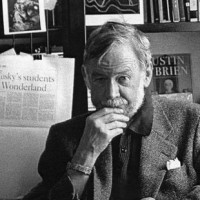Notable projects
Boyd/Caswell House

Originally built in the early 19th century, located on outskirts of the city (Carlton), this terrace house remained untouched until the addition designed by Dance in 1994. [5] The clients requested that the addition to the house create two separate living zones; one for the couple of the household and another for their teenage daughter. Dance achieved this by retaining the first two rooms of the terrace, making them the daughter's bedroom and study, thus Dance could design a new section of the house solely dedicated to the use of the parents. The new wing incorporated a bedroom, study, ensuite and kitchenette. To ensure a clear division, Dance created a second staircase joining the kitchen on the first floor to the parental zone on the second, therefore the two zones did not connect through a shared staircase.
For Dance the renovation did not only separate the two zones through program but also though the high contrast in design. The extension was made with corrugated steel to contrast the original brick building. The added curved roofline added a sense of space, with the roof reaching 3.5 meters at its highest point. A deck was added between the two zones acting as a communal space and a light well, sending shafts of light through the irregularly shaped windows outlined in bright red. It has been suggested that sometimes extensions should amplify the differences to enhance the original. [6]
Conservatory Home


This house began as an 1870s Victorian terrace house, which was left boarded-up and uninhabitable for 15 years before Dance renovated it and made new additions. [7] [8] Like many Victorian style terraces, this house had a well-planned façade with large windows. However the rear looked like an afterthought and a series of makeshift rooms that may have been added at a later date. This resulted in a house that was poorly lit and very dark towards the back of the terrace. Dance approached this project aiming to leave as much of the existing structure as she could, thus leading to her building a conservatory that protruded form the outside of the building. The conservatory consisted of floor to ceiling glass windows underneath a new pergola. The glass structure allowed light into the original parts of the house such as the kitchen and living areas. A similar aesthetic was also applied to the upper floor at a smaller scale to allow light into the bedroom. [8]
Actor's House and Studio
The Actor’s house and studio was designed by Suzanne Dance in Melbourne, 1976. It was awarded the RAIA Victorian Chapter, Housing Category Medal. [1] Corrugated iron was used as a primary material for this structure as it was used internationally and locally for its flexible and malleable properties, [9] which then helped Dance achieve a primitive and a strange futuristic image. [10] The building was wrapped using this material to clad both the inside and outside of the back half of the house. This helped to elongate the form of the building, which was placed on an already very tight and vertical site. Corrugated iron is nestled behind a wall of trees making the house blend into the environment. The materials that dance chose to use for this project highly influenced the form of the building, which further influenced how corrugated iron is used in the suburbs of Melbourne. [10]










